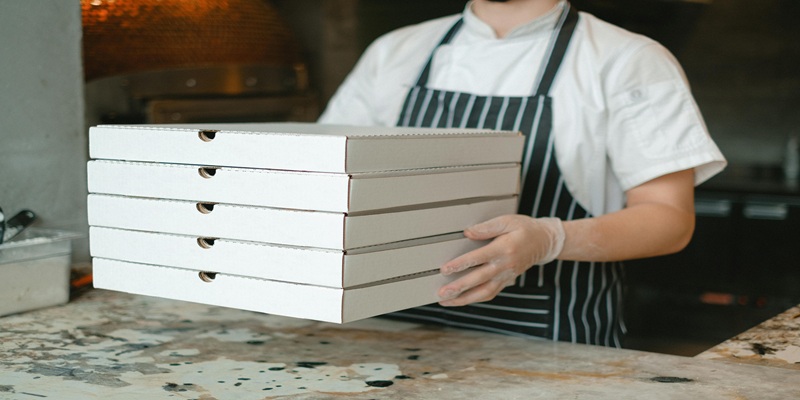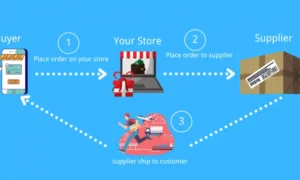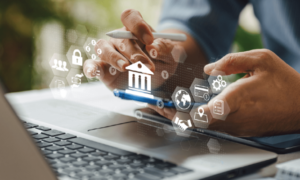Convenience is king. As a result, food delivery services have emerged as a vital solution, seamlessly integrating into modern lifestyles. From students managing academic deadlines to professionals juggling back-to-back meetings, everyone is seeking more efficient ways to eat well without sacrificing time or quality. Thus, food delivery platforms are no longer just a luxury—they have become a daily necessity.
These services are not merely about bringing meals to your doorstep. Rather, they reflect a significant shift in consumer behavior, technological advancement, and economic trends. As society leans further into digital life, the food delivery ecosystem continues to evolve rapidly, offering more personalized, flexible, and healthy choices.
The Evolution of Food Delivery: From Takeout to Tailored Tech Experiences
To understand the boom in food delivery services, it’s essential to trace their roots. Traditionally, ordering food meant calling your local pizzeria or Chinese restaurant. Fast forward to the digital era, and now a few taps on a smartphone can summon sushi, vegan bowls, or gourmet desserts within minutes.
Moreover, technological innovation has played a transformative role. Mobile apps, GPS tracking, AI-driven recommendations, and digital wallets have turned food delivery into a high-tech experience. Companies like Uber Eats, DoorDash, Grubhub, and Deliveroo have created platforms that go beyond mere delivery—they provide an entire ecosystem tailored to user preferences and habits.
Consequently, these platforms are able to offer dynamic menus, user ratings, and even nutrition information. In essence, technology has empowered consumers to make more informed choices, all while enjoying a seamless experience.
Why Food Delivery Services Are Perfectly Aligned with Modern Lifestyles
There are several compelling reasons why food delivery fits seamlessly into the rhythm of contemporary life. First and foremost is time efficiency. With demanding schedules and longer work hours, many individuals find it difficult to cook regularly. Ordering food becomes a practical solution that saves both effort and time.
Additionally, the variety available through food delivery apps is unparalleled. Instead of settling for what’s in the fridge, users can choose from a wide range of cuisines. Whether it’s Mediterranean, Thai, Mexican, or plant-based meals, the options are virtually endless.
Furthermore, the rise of remote work has increased the demand for food delivery services. As more people work from home, traditional meal planning has taken a backseat. It’s now easier and often more efficient to order a healthy, hot meal delivered right to your door than to interrupt your workflow to cook.
Personalization and Customization: Meeting Individual Preferences
Another remarkable feature of modern food delivery services is personalization. Unlike traditional dine-in experiences, delivery platforms leverage data to offer custom suggestions. These are based on your previous orders, dietary preferences, and even the time of day you typically order.
For instance, if you’re someone who orders gluten-free meals, the app might highlight trending gluten-free dishes or alert you to new restaurants offering such options. Some platforms even allow you to filter by calorie count, protein content, and other nutritional details. This tailored approach significantly enhances user satisfaction and encourages brand loyalty.
In addition, many services allow detailed customization. Want less spice, no onions, or extra avocado? Simply add it in the notes. This flexibility ensures that each order is precisely what the user desires, thus enhancing the overall experience.
The Role of Transitioning Technologies in Shaping the Industry
As artificial intelligence and machine learning continue to advance, food delivery platforms are becoming even more intelligent. For example, AI can predict what you might want to eat based on the weather, your location, or previous behavior. During cold, rainy days, users might see hot soups and stews featured more prominently on the app.
Furthermore, automated kitchens and cloud kitchens are reshaping the logistics of food preparation. These facilities operate without a dine-in option, focusing entirely on delivery. This model reduces overhead costs and allows for quicker turnaround times, ensuring that meals reach customers faster and fresher.
Even delivery methods are evolving. From drones to self-driving vehicles, companies are testing innovative methods to reduce delivery times and labor costs. While these technologies are still in their infancy, their potential to disrupt the industry is immense.
Environmental Considerations and Sustainability Initiatives
With growth comes responsibility. As the food delivery industry expands, so does its environmental footprint. Packaging waste, increased emissions, and food waste are pressing concerns. However, many companies are now taking proactive steps to mitigate these impacts.
For example, eco-friendly packaging made from biodegradable or recyclable materials is gaining popularity. Some apps even allow users to opt out of utensils and napkins to reduce waste. Others are collaborating with local farms and sustainable food sources to minimize carbon footprints.
Furthermore, the rise of plant-based options on food delivery menus contributes to more sustainable eating habits. Many people are choosing meat alternatives not just for health reasons but also to reduce their environmental impact. Clearly, sustainability is becoming a critical factor in consumer decision-making, and the industry is responding accordingly.
Health and Wellness Trends in Food Delivery
Modern consumers are more health-conscious than ever. Therefore, food delivery services have adapted by offering a wide variety of nutritious choices. From keto-friendly dishes to vegan and gluten-free options, the availability of health-oriented meals has surged.
Additionally, some apps partner with dietitians or fitness platforms to offer meal plans designed for specific health goals. Whether you’re aiming to lose weight, gain muscle, or maintain a balanced diet, there’s a delivery option tailored to support that journey.
Meal prep services have also grown in popularity. These deliver pre-portioned ingredients and recipes, allowing users to cook healthy meals at home without the hassle of grocery shopping. Thus, the line between delivery and home cooking is beginning to blur.
Economic Impact and Opportunities for Gig Workers
The economic influence of food delivery services cannot be ignored. They have created thousands of jobs, particularly in the gig economy. While this model has sparked debates about fair wages and job security, it has undeniably provided flexible work opportunities for many.
Delivery drivers, app developers, customer service agents, and logistics coordinators all contribute to the success of this rapidly growing sector. In fact, in some regions, food delivery jobs have become an essential source of income, especially during economic downturns or pandemics.
At the same time, local restaurants benefit by gaining access to a broader customer base. Instead of relying solely on foot traffic, they can reach users across a wide geographic area. This expanded visibility can significantly boost sales, particularly for small or independent establishments.
The Prospect of Food Delivery Services: What Lies Ahead
Looking forward, the future of food delivery services appears more promising than ever. As urban populations grow and digital connectivity improves, the demand for convenient dining options will only increase. Moreover, customer expectations will continue to rise, pushing platforms to offer faster, healthier, and more sustainable solutions.
Integration with smart home devices, voice assistants, and augmented reality could further enhance the user experience. Imagine asking your smart speaker to recommend lunch, placing an order with a voice command, and tracking your food in real-time—all hands-free.
On a broader scale, the focus will likely shift from pure convenience to delivering value-added experiences. Loyalty programs, subscription models, and exclusive member benefits could redefine how people interact with these platforms.
Conclusion
Ultimately, food delivery services are more than just a modern convenience—they are a reflection of evolving consumer needs, digital innovation, and a lifestyle centered around flexibility. By offering time savings, personalized choices, and broad accessibility, these platforms have become integral to daily life.
As they continue to innovate and adapt, their role in shaping our eating habits, economic structures, and technological landscape will only become more profound. Indeed, in catering to modern lifestyles, food delivery services have not just responded to change—they’ve become one of its most dynamic drivers.




























